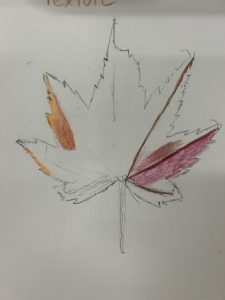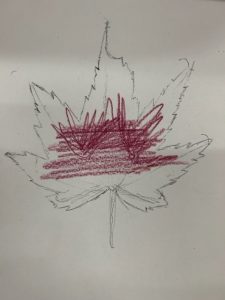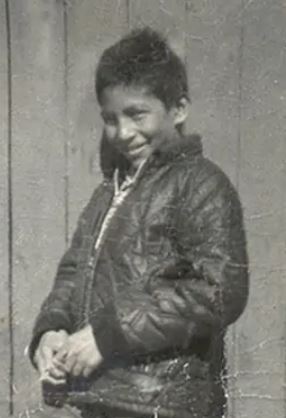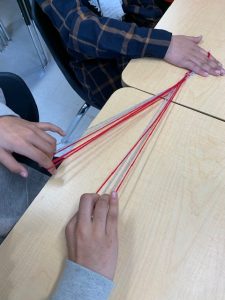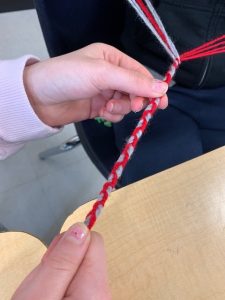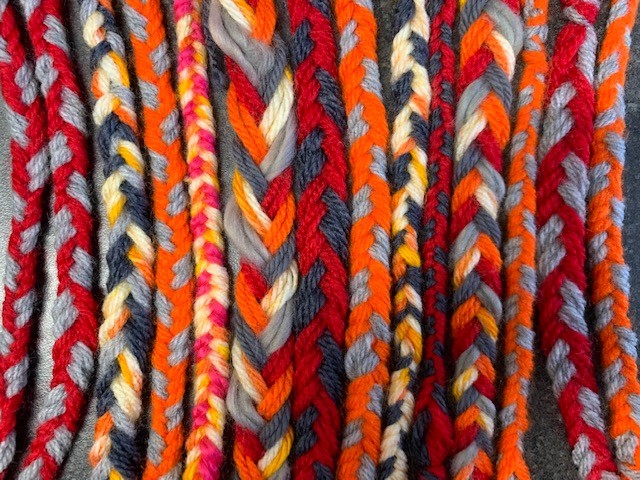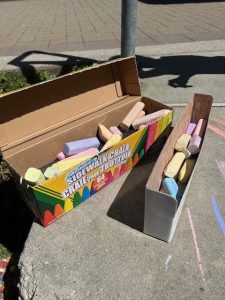 Division 5 planned and created chalk mandalas this week. When I came across this giant box of 64 different chalk colours, I KNEW we had to do this project!
Division 5 planned and created chalk mandalas this week. When I came across this giant box of 64 different chalk colours, I KNEW we had to do this project!
First, we looked at examples of mandalas and learned that the word “mandala” is Sanskrit for circle. A mandala balances visual elements symbolizing unity and harmony. Then, students worked in small groups to design and plan a mandala on paper. They practiced how to use a compass to draw a circle, and were introduced to the concepts of radius and circumference. Next, we learned how to use a pencil as a centre point, connected to a piece of chalk with string, to recreate our designs on a larger scale outside. Students worked together to create beautiful mandalas. We discussed how this type of art is temporary and becomes a part of the community, enhancing and beautifying the space its in, even if for a short time.
You can check them out before the rain washes them away near the entrance to University Highlands, or enjoy them in perpetuity on this blog!



































































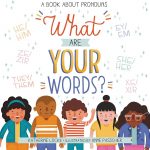 The first was a “half ‘n’ half” portrait where one side was part of a lesson in proportionate sketching, and on the other side, students used symbolism to represent who they are and what they like. After reading What Are Your Words? students added descriptive words to their portraits.
The first was a “half ‘n’ half” portrait where one side was part of a lesson in proportionate sketching, and on the other side, students used symbolism to represent who they are and what they like. After reading What Are Your Words? students added descriptive words to their portraits.




















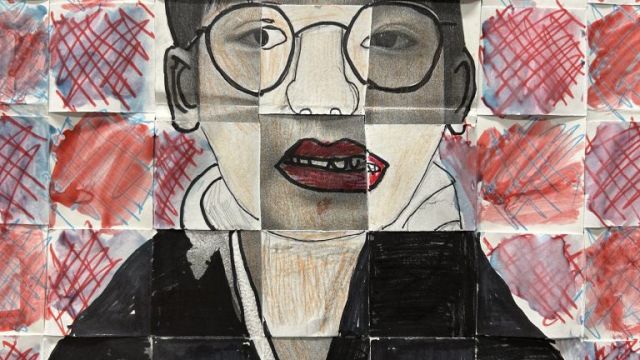











 At this time of year our subject of choice is the beautiful leaves around us. The colours are so vibrant, and the shapes and textures are varied. Each student chose a leaf they liked, and set to work sketching the shape. They had to pay attention to small details like a bit of the leaf that was torn or missing, the shape of the stem, and if the leaf had points or texture around the edge.
At this time of year our subject of choice is the beautiful leaves around us. The colours are so vibrant, and the shapes and textures are varied. Each student chose a leaf they liked, and set to work sketching the shape. They had to pay attention to small details like a bit of the leaf that was torn or missing, the shape of the stem, and if the leaf had points or texture around the edge.